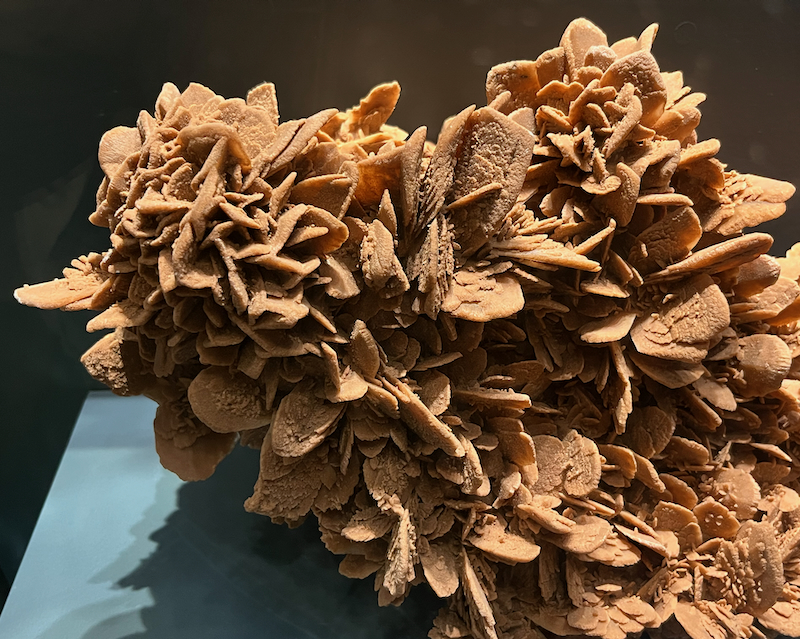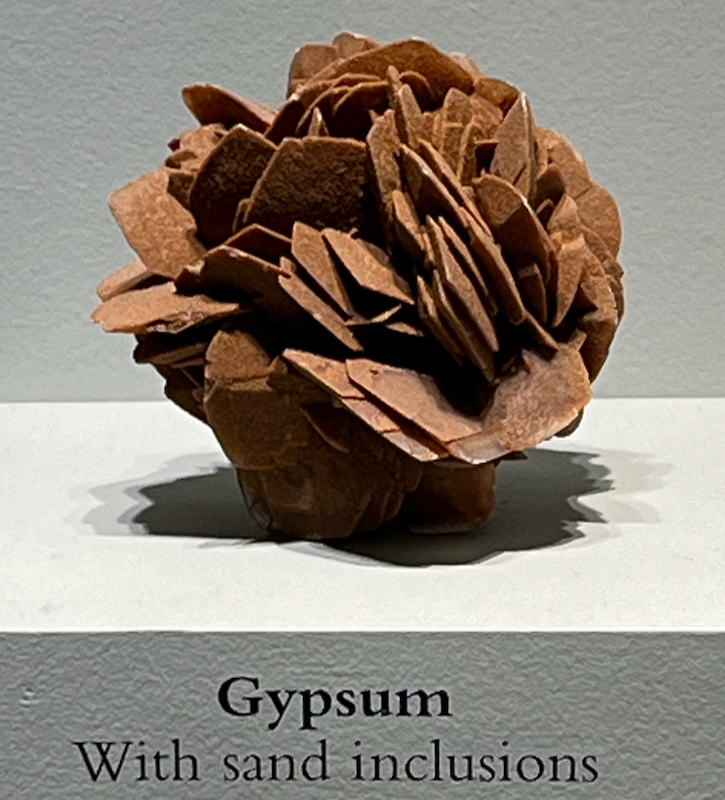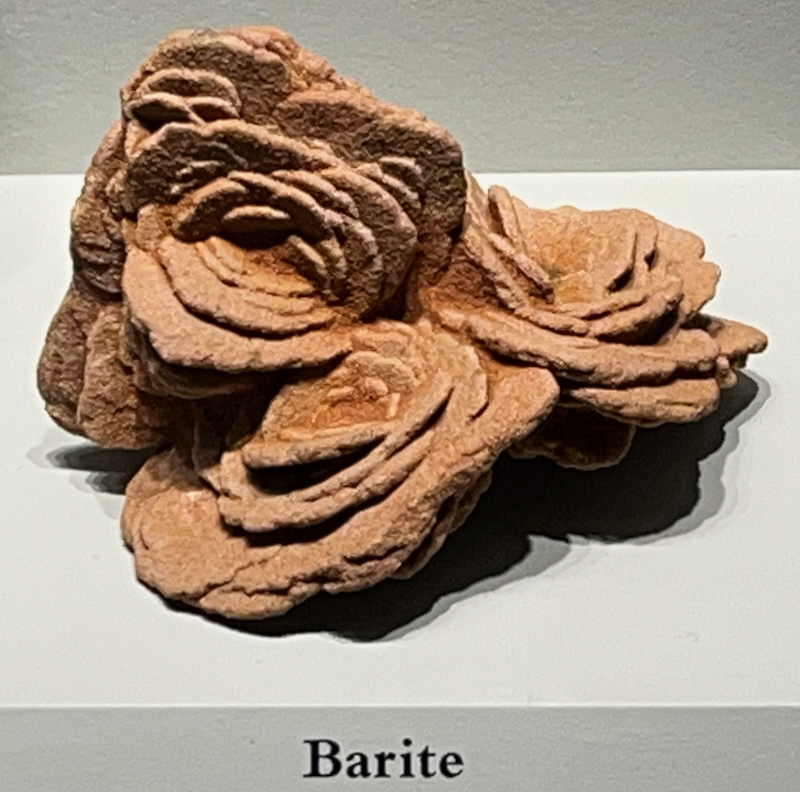Mineral Rose
Some mineral specimens are special because of their shape rather than what mineral they are. Mineral roses are one of the best examples of that. A number of different minerals can form rose-shaped crystal formations, including gypsum, baryte, hematite, pyrite, calcite, and others. The rose shape is made up of thin crystals that look like flower petals that are all attached together at, or grow out of, the same base. When mineral roses form in desert sand, they’re called desert roses, and the crystals can include sand in them. Those are usually made of gypsum or baryte and can be found in places like western Oklahoma and, just a bit east of that, the Sahara Desert in North Africa. When minerals like hematite form rose shapes, they’re in a cleaner environment, not in sand, and the petals that make up the rose are pure, shiny hematite crystals (in this case).
| Formula | Group or Type | Shape | Hardness | Specific Gravity | Streak | Luster |
|---|---|---|---|---|---|---|
| — | — | — | — | — | — | Metallic, vitreous, dull, or earthy |



